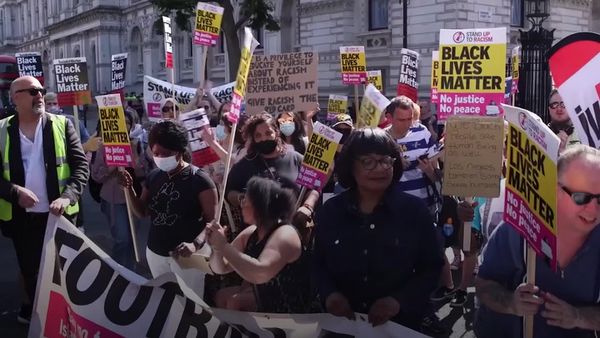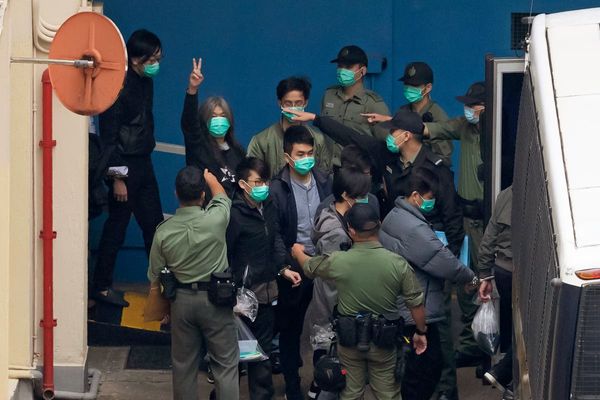The Madras High Court has carried out multiple corrections to a judgment delivered by it on March 6 on a batch of three writ of quo warranto petitions filed against Ministers Udhayanidhi Stalin and P.K. Sekarbabu and the Nilgiris Member of Parliament A. Raja in connection with the Sanatana Dharma row.
Justice Anita Sumanth had pronounced the verdict on March 6 afternoon and a web copy of it was made available on the High Court website on March 7 morning. However, on March 8, the first web copy was taken down from the website and replaced with another copy containing multiple corrections.
In paragraph number 43 of the first web copy, the judge had recorded the writ petitioners’ submission that the State of Tamil Nadu had a list of 184 castes falling within backward and most backward classes but such divisions were a creation of recent times and not that of vedic literature.
There was no in-text reference in that copy mentioning the source from which the petitioners had made the claim about the existence of 184 castes. However, in the second web copy, an in-text reference had been added indicating the data to have been sourced from the Tamil Nadu government website
Study by reasearch institute
Further, in paragraph 121 of the first web copy, the judge had stated that a sample study of the original vedic texts was carried out, at the court’s request, by senior professors at Kuppuswami Sastri Research Institute in Chennai and the study confirmed that the phrase Sanatana Dharma was always used in the context of high moral values and virtuous living.
“My thanks to them for this timely assistance. There is absolutely no material to lead to the conclusion that that phrase was used in the context of the Varna system or to propagate unfair and inequitable divisions of society in any manner,” the judge had said.
However, in the corrected web copy, the word ‘only’ had been added to the second sentence which read: “There is absolutely no material to lead to the conclusion that that phrase was used only in the context of the Varna system or to propagate unfair and inequitable divisions of society in any manner.”
Sindhu modified to Hindu
In paragraph 128 of the first web copy, the judge had stated that those who lived on the banks of River Sindhu were practitioners of Sanatana Dharma. “The word ‘Sindhu’ came to be modified over the years by foreign invaders to ‘Hindu’ and in time, became associated with the people living in that area. As the Hindus/practitioners of Sanatana Dharma expanded their area of residence, they carried with them the tenets of Sanatana Dharma as well” the paragraph read.
The corrected web copy does not make any change to those sentences but provides an in-text reference citing the source for such an observation to be ‘The Hindu View of Life’ penned by former President Sarvepalli Radhakrishnan and published by Harper Collins.
Origins of caste system
Two other sentences in paragraph 138 of the first web copy read: “The origins of the caste system as we know it today are less than a century old. The State of Tamil Nadu has 370 registered castes and the State is a cacophony of pulls and pressures by groups of persons claiming allegiance to one caste or the other.”
In the second web copy, they had been corrected to read: “The categorization of castes as we know them today, is a far more recent and modern phenomenon. The State of Tamil Nadu has 184 registered castes and the State is a cacophony of pulls and pressures by groups of persons claiming allegiance to one caste or the other.”
Further, the corrected web copy also had an in-text reference providing the source of the observation related to present day categorisation of castes being a recent and modern phenomenon to an article titled ‘Moments in a History of Reservations’ penned by Bhagwan Das and published in Economic and Political Weekly in November 2000.
YouTube lectures
Similarly, paragraph 57 of the first web copy read: “A series of lectures on YouTube addresses the crying need for compatibility amongst the various schools of thought within the Hindu religion itself, such that the religion is not fragmented or divided.” It also had an in-text reference to a YouTube lecture on Santana Dharma by Velukudi Krishnan.
However, paragraph 57 of the corrected web copy removed all references to YouTube lectures to read: ”Contemporary discourse amongst vedic scholers (sic) addresses the crying need for compatibility amongst the various schools of thought within the Hindu religion itself, such that the religion is not fragmented or divided.”
Other corrections
Apart from these, the first web copy had wrongly mentioned the date when the judgment was reserved to be December 21, 2024. The typographical error had been corrected to December 21, 2023 in the second copy.
Further, due to the corrections and re-alignment of paragraphs, the size of the corrected web copy of the judgement had reduced to 102 pages as against 107 pages in the first web copy. However, the page numbers provided in the index to the judgment were not changed leading to the index in corrected web copy ending up mentioning wrong page numbers.
Unacceptable, says lawyer
Advocate M. Radhakrishnan said the corrections made to the judgment has led to an undesirable situation of hundreds of people, interested in the subject, being in possession of two different web copies of the same judgment since many had downloaded the first copy before it got replaced.
He said once a judge signs a verdict, he/she would become functus officio and should not add or delete even a comma without listing the matter once again in open court and putting the lawyers concerned on notice especially when web copies were also considered as authenticated copies after the inclusion of QR codes.
“In this case, even if the court staff had mistakenly uploaded the first web copy before the judge made the corrections and signed the judgment, it would have been fair to replace it with a corrected copy only after listing the cases under the caption ‘For clarification’ and the making the corrections public,” he said.
The lawyer recalled that former Chief Justice Sanjib Banerjee had followed the procedure scrupulously when he wanted to make a small correction to the judgment in a case filed against former Chief Secretary Girija Vaidyanathan’s appointment as an expert member of National Green Tribunal.
“It was a minor correction. Yet, the Chief Justice listed the case the very next day of the uploading of the web copy, put me on notice and then made the correction. That is the correct procedure,” he said.







